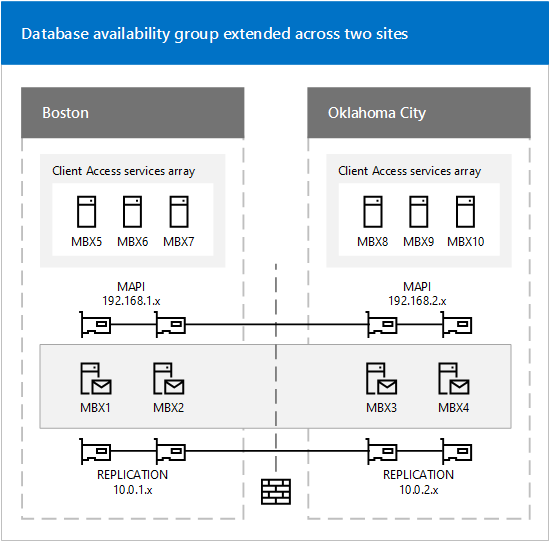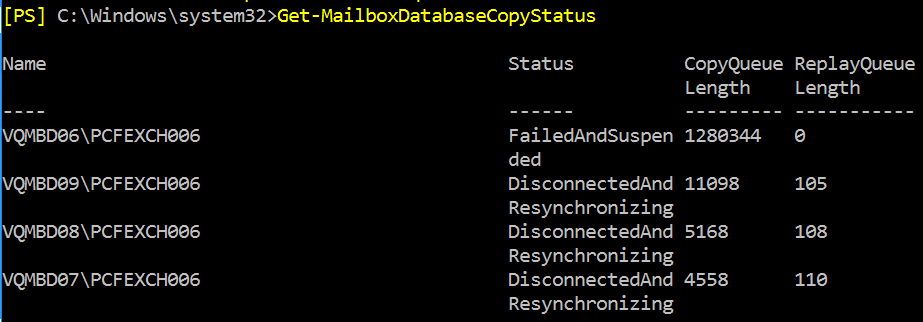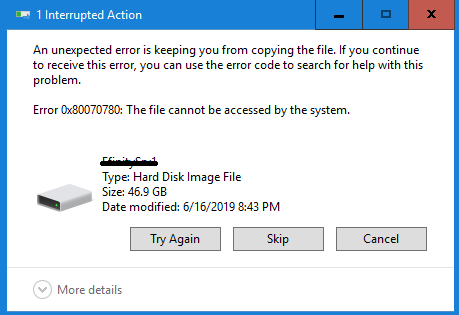Lucia Stanham wrote an amazing article at Azure blog on some observations I had before I was able to write my own, so instead of rehashing the same thing, I’m posting the article instead:
A need for hybrid and multicloud strategies for financial services
The financial services industry is a dynamic space that is constantly testing and pushing novel use cases of information technology. Many of its members must balance immense demands—from the pressures to unlock continuous innovation in a landscape with cloud-native entrants, to responding to unexpected surges in demand and extend services to new regions—all while managing risk and combatting financial crime.
At the same time, financial regulations are also constantly evolving. In the face of the current pandemic, we (at Microsoft) have seen our customers accelerate in their adoption of new technologies, including public cloud services, to keep up with evolving regulations and industry demands. Hand in hand with growing cloud adoption, we’ve also seen growing regulatory concerns over concentration risk (check out our recent whitepaper on this), which have resulted in new recommendations for customers to increase their overall operational resiliency, address vendor lock-in risks and require effective exit plans.
Further complicating matters, many financial services firms oversee portfolios of services that include legacy apps that have been in use for many years. These apps often cannot support the implementation newer capabilities that can accommodate mobile application support, business intelligence, and other new service capabilities, and suffer from shortcomings that adversely affect their resiliency, such as having outdated and manual processes for governance, updates, and security processes. These legacy applications also have high vendor lock-in because they lack modern interoperability and portability. Furthermore, the blunt force approach of leveraging legacy technology as a means for protecting against financial crime is an unsustainable strategy with diminishing returns—with big banks spending over $1 billion per year maintaining legacy infrastructure and seeing a rise in false positive rates as financial crime evolves in sophistication.
As a means to address the demands of modernization, competition, and compliance, financial services organizations have turned to public cloud, hybrid cloud and multi-cloud strategies. A hybrid model enables existing applications—which originally exist on-premises—to be extended by connecting to the public cloud. This infrastructure framework unleashes the benefits of the public cloud—such as scale, speed, and elastic compute, without requiring organizations to rearchitect entire applications. This approach provides organizations the flexibility to decide what parts of an application should reside in an existing datacenter versus in the public cloud, as such providing them with a consistent and flexible approach to developing a modernization strategy.
Additional benefits of successful hybrid cloud strategies include:
- A unified, consistent approach for infrastructure management: Consistently manage, secure and govern IT resources across on-premises, multicloud and the edge, delivering a consistent experience across locations.
- Extending geographic reach and openings new markets: Meet the growing global demand and extend into new markets by extending the capabilities of datacenters to new locations – while also meeting data localization requirements from local markets
- Managing security and increasing regulatory compliance: Hybrid and multicloud are great alternatives for strictly on-premises strategies due to cloud benefits around service security, availability, resiliency, data protection and data portability. These strategies are often referenced as a preferred way of reducing risk and addressing regulatory compliance challenges.
- Increasing Elasticity: Customers can respond with agility to surges in demand or transaction by provisioning and de-provisioning capacity as needed. A hybrid strategy allows organizations to seamlessly scale their capacity beyond their datacenter during high-compute scenarios, such as risk computations and complex risk modeling, without over exhausting servers or slowing down customer interactions.
- Reducing CapEx Expenses: The cloud makes the need for such a large capital outlay for managing on-premises infrastructure unnecessary. Through the benefits of elastic capacity in hybrid scenarios, companies can avoid the costs of unused digital capacity, paying only for the resources that are consumed.
- Accelerate time to market: A hybrid strategy provides a bridge that connects on-premises data to new cloud-based capabilities across AI and advanced analytics, allowing customers to modernize their services and unlock innovation. With virtualized environments, they can accelerate testing and evaluations cycles and enable deployment seamlessly across different locations.
A multicloud strategy enables customers to leverage services that span different cloud platforms, enabling them to select the services best suited to the workloads or apps they are managing.
Commonly cited benefits of a multicloud strategy include:
- Flexibility: Customers wish to have the flexibility to optimize their architectures leveraging the cloud services best suited to their specific needs, including the flexibility to select services based on features or costs
- Avoiding vendor lock-in: A common requirement customers often state, customers often seek design multi-cloud deployments to achieve short term flexibility and long-term agility by designing systems across multiple clouds.
Microsoft hybrid and multicloud edge for financial services organizations
Azure hybrid capabilities uniquely address some of the main barriers customers face around hybrid and multicloud strategies. Managing multiple environments is an endeavor that introduces inherent complexity and risk for firms, faced with an expanding data estate that spans diverse on-premises, public cloud(s), and edge environments. Optimizing for productivity without sacrificing security and compliance can be daunting. Azure provides a seamless environment for developing, deploying and managing data and applications across all distributed locations.
For one, Azure uniquely supports the full range of hybrid capabilities across DevOps, Identity, Security, Management, and Data. Given that customer IT estates involve much more than containers, many of our cloud benefits are also available to server-based workloads. Azure enables customers to manage both Windows and Linux servers across their data estate and customers can also manage access and user authentication with hybrid identity services. The Azure Stack portfolio extends Azure services and capabilities to your environment of choice—from the datacenter to edge locations and remote offices and disconnected environments. Customers can run machine learning models on the edge, in order to get quick results before data is sent to the cloud. Furthermore, with capabilities such a Azure Stack Hub, our portfolio enables organizations to operate in offline environments that block data from being sent to the public cloud, especially if required for regulatory compliance.
Second, Azure simplifies the experience of managing a complex data estate by providing a unified, consistent approach for managing and monitoring their hybrid or multicloud environments. With capabilities such as Azure Arc, can manage their data estate with a single management plane—including the capability to monitor non-Microsoft clouds. Customers can also take a similarly simplified approach to managing security across their estate with services such as Azure Sentinel, which provides a consistent threat detection and security analytics view across on-premises, cloud and edge devices. In combination with services such as Azure Security Center, Azure policy, and Azure advisor, customers can also design, deploy, and oversee security and compliance of their deployments across their hybrid and multicloud environments.
Azure leadership in hybrid and multicloud offerings is also rooted in our extensive collaborations with hardware partners (OEMs), which whom we have partnered and co-engineered solutions to deliver a well-defined variety of supporting devices. Partner solutions have been designed with the aim in mind to increase resiliency and expand the reach of virtual data centers. With the new rugged series of Azure Stack Edge for instance, we provide cloud capabilities in the harshest environment conditions supporting scenarios such as tactical edge, humanitarian and emergency response efforts.
The Azure commitment to financial services customers stems from Microsoft industry-leading work with regulators around the world. Our customers require their cloud partners to support transparency, regulatory right to audit, and self-reporting. To enable this, we have a dedicated and comprehensive FSI compliance program available to customers and help customers manage their compliance by enabling choices around data location, transparency and notification of subcontractors, providing commitments on exit planning (see our recent blog here), as well as tools to aid in risk assessments.

Customer spotlights
We’ve seen many of our financial services customers begin to realize the benefits of hybrid and multicloud strategies already. In a recent Total Economic Impact study commissioned with Forrester on the impact of shifting from on-premises to Azure IaaS (including to hybrid environments), over a three year period, organizations avoided 90 percent of on-premises infrastructure costs (valued at over $7 million), as well as associated employee costs. Organizations were able to reallocate their IT staff to higher level business initiatives, including ventures of expansion into new markets, which resulted in altogether new streams of income for the companies.
One example of a company that took a hybrid approach was Banco de Crédito e Inversiones (BCI). Their portfolio supported 20 million transactions a month and required a hybrid approach in order to keep apps and resources on-premises for regulatory and performance reasons. With Azure Stack Hub, they were able to improve the performance and reliability of their systems, and even rolled out new products quickly. They were able to switch from outsourced IT management to in-house management.
“We’ve found the whole Azure platform to be very reliable and stable, and it gets better with each release. In fact, we have statistics showing that when we enabled Azure Stack Hub, customer satisfaction went up. It’s very clear. We’re delivering a better experience for our customers through the reliability and performance of Azure Stack Hub and the new functionality our team is building on top of it.”—German Matosas, Head of Architecture and Cloud Platform, BCI
Another example is Volkswagen Financial Services, a branch of VW that manages approximately 80 web apps across ten countries—a complex IT estate by any measure. They needed to modernize their apps and development approach and leveraged Azure Stack Hub to bring cloud speed and scale to their DevOps practices. This strategy also allowed them to maintain components of their highly customized apps on-premises (such as core databases and SAP systems), due to privacy and compliance requirements. This also enabled them to add new services without needing to rework their existing applications.
What about full or single cloud?
While the focus of this blogpost has been hybrid and multicloud strategies, it is also worth briefly touching on the value of partnering with a single cloud provider to provide end-to-end solutions. This is referred to as a “full cloud” or “single cloud” strategy and serves the long-term objective of shutting down all on-premises data centers and moving all workloads to a single cloud provider. This strategy also has its merits and in fact may offer benefits over both hybrid and multicloud solutions, such as offering simplified management, less complexity, and lower total cost of ownership (TCO). Partnering with a highly resilient CSP, such as Microsoft, for a full cloud strategy, has been the solution of choice for several financial institutions. The unique benefits of a full cloud strategy need to be weighed against potential downsides, but in principle, this approach is allowed by regulators in most global jurisdictions.
Deciding on a hybrid or multicloud strategy
Many organizations commence their journey from a fully on-premises baseline. We’ve seen that as they start to consume public cloud services, questions arise around what the most appropriate deployment strategy could be—whether they should take a full cloud, hybrid cloud, or multicloud approach.
If you respond positively to one or more of the questions below you are likely in a good position for using hybrid or multicloud strategies:
- Does your organization’s digital strategy enable your organization to easily adopt new and emerging technologies and deploy them to on-premises or legacy apps?
- Does your organization have a digital strategy that welcomes innovation but is not ready to fully commit to a public cloud?
- Do you find it challenging to meet capacity demands in your IT infrastructure and meet unexpected surges in demand or maintain performance levels?
- Does your IT department struggle to manage different technologies from different providers and keep oversight across multiple environments?
- Does your organization face pressure from regulators or risk departments to maintain certain processes on-premise, or within specific geographic regions (data residency)?
- Is your organization considering expanding into new geographies or new markets?












